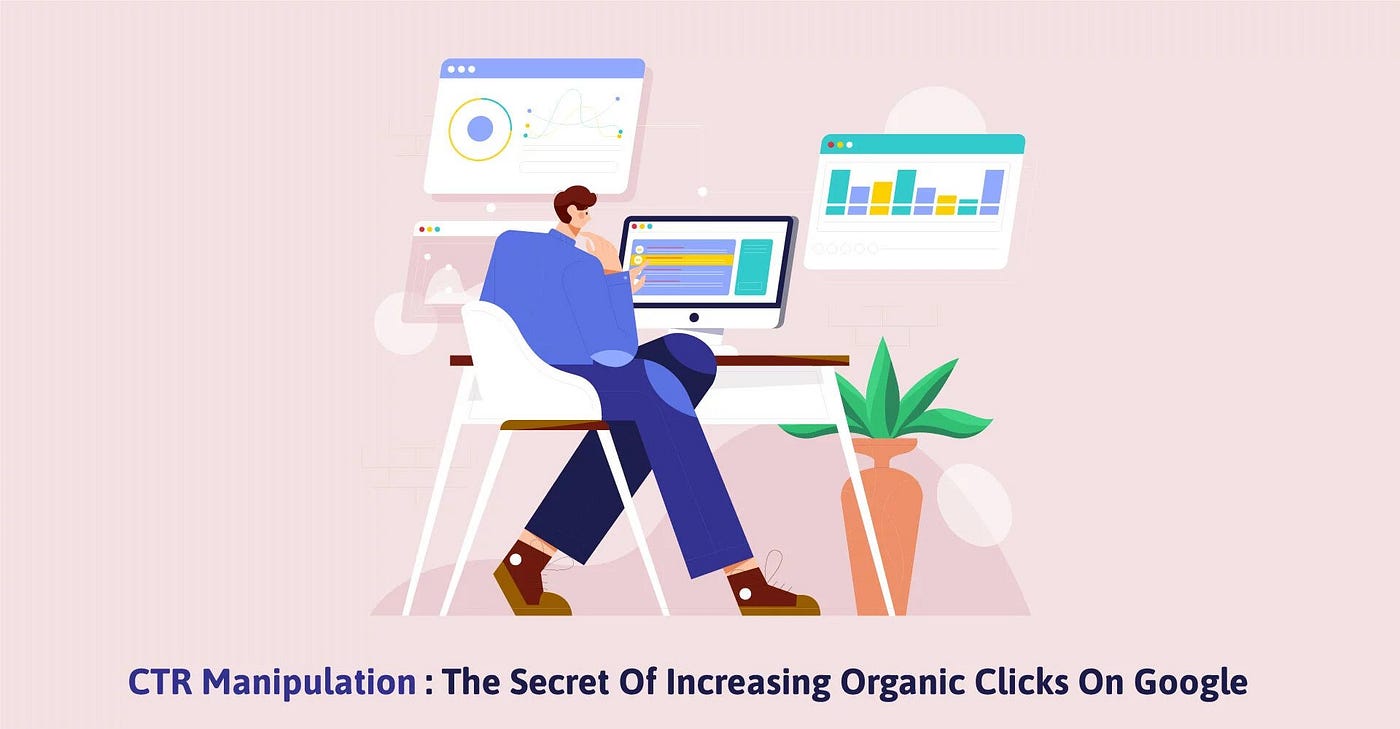CTR Adjustment: A Video Game Changer for Digital Campaigns
The rise of CTR manipulation has actually unquestionably changed electronic advertising and marketing approaches, giving online marketers with tools to boost involvement and drive website traffic effectively. Strategies such as A/B testing and personalized web content have actually verified to yield substantial renovations in click-through rates. Nevertheless, as brand names progressively take advantage of these techniques, the moral implications of such techniques warrant scrutiny. Balancing the search of enhanced metrics with the need for authentic audience links presents an essential challenge for online marketers today. What ramifications might this balancing act hold for the future of digital campaigns?
Recognizing CTR Adjustment
Although click-through rate (CTR) control might feel like a simple tactic in electronic marketing, it encompasses a variety of techniques intended at artificially pumping up interaction metrics. This adjustment can take numerous forms, consisting of making use of click farms, robots, or misleading advertisement placements that misinform customers right into clicking. These methods can jeopardize the integrity of performance data, making it challenging for marketing experts to determine the real efficiency of their projects.
In addition, CTR manipulation increases moral concerns, as it threatens the transparency of digital advertising. The dependence on inflated metrics can bring about illinformed advertising decisions, skewing resource appropriation and project methods. Services may spend greatly in channels and strategies that appear successful but do not generate genuine interaction or conversions.

Benefits of Click-Through Rate Optimization
Optimizing click-through rate (CTR) is crucial for boosting the efficiency of digital advertising campaigns. A greater CTR suggests that a bigger percentage of customers are involving with the material, which can bring about increased internet site traffic and far better conversion prices. By boosting CTR, brands can successfully allot their advertising sources to efforts that generate the greatest returns.
One of the primary benefits of CTR optimization is the possibility for improved ad positioning and reduced prices - CTR Manipulation. Systems like Google Advertisements compensate greater CTRs with far better ad positioning and decreased cost-per-click (CPC), enabling marketers to extend their budget plans better. Additionally, a well-optimized CTR can improve brand name visibility, as greater engagement prices often correlate with boosted natural reach

Techniques for Effective CTR Manipulation
To properly control click-through rates (CTR), marketers can employ a selection of calculated techniques that boost customer engagement and drive website traffic. One basic method is enhancing ad duplicate to produce engaging and action-oriented language. CTR Manipulation. Utilizing solid call-to-action (CTA) expressions encourages users to take immediate action, enhancing the possibility of clicks
One more reliable technique is A/B testing, which enables marketing experts to contrast different advertisement variants. By systematically evaluating efficiency metrics, they can recognize which aspects reverberate ideal with the target audience, consequently improving their approaches have a peek at these guys for maximum effect. Furthermore, leveraging visually appealing graphics and succinct messaging can record focus swiftly, making it a lot more likely that users will certainly involve.

Last but not least, enhancing touchdown pages to make sure a seamless customer experience can minimize bounce prices and encourage additional interaction, ultimately fostering greater CTR. By incorporating these methods, online marketers can successfully adjust CTR to accomplish their project goals.
Determining Success in Digital Campaigns
Determining success in digital projects needs a clear understanding of vital efficiency signs (KPIs) that line up with project goals. KPIs work as measurable metrics that assist analyze the performance of numerous approaches utilized throughout the project. Usual KPIs include click-through prices (CTR), conversion rates, expense per procurement (CPA), and roi (ROI)
To efficiently gauge success, it is crucial to develop specific, quantifiable objectives at the beginning of the campaign. For instance, if the main goal is to boost brand name recognition, metrics such as impressions and engagement rates may be prioritized. In contrast, projects focused on straight sales would take advantage of an extra in-depth evaluation of conversion rates and profits created.
Routine analysis of these KPIs enables marketing experts to make data-driven decisions, enhancing their techniques in real-time. Utilizing logical tools can help in monitoring efficiency and determining trends, enabling speedy modifications to improve campaign end results. Ultimately, a comprehensive method to gauging success not just highlights areas for enhancement however additionally reinforces the overall performance of electronic advertising efforts, driving continual development and involvement in the long-term.
Future Trends in Digital Marketing
Expecting the future of digital advertising and marketing reveals a landscape shaped by fast technical improvements and changing customer actions. As expert system and company website artificial intelligence remain to advance, marketing professionals will progressively leverage these innovations to customize campaigns at an unmatched scale. Predictive analytics will enable brand names to expect consumer demands, enhancing ad placements and content delivery in actual time.
Moreover, the increase of voice search and wise gadgets is transforming how customers connect with electronic material. Online marketers will require to adjust their methods to guarantee visibility throughout several platforms, including voice-activated aides. This shift demands a concentrate on conversational advertising, emphasizing engagement with dialogue as opposed to standard advertising techniques.
Furthermore, privacy worries are triggering changes in information collection practices. Openness and ethical information usage will become paramount, driving brand names to promote trust and loyalty amongst customers. The ongoing advancement of social networks platforms will also influence advertising and marketing approaches, with an increased focus on authenticity and user-generated web content.
Conclusion
In summary, CTR control stands for a substantial innovation in electronic advertising strategies, using prompt advantages through enhanced involvement metrics. The moral factors to consider bordering such practices necessitate a careful strategy to ensure long-term brand integrity and real target market link. By striking an equilibrium between optimization techniques and authentic involvement, marketing professionals can cultivate sustainable relationships with customers. The recurring development of digital marketing will certainly depend upon this fragile interplay, shaping the future landscape of brand-consumer communications.